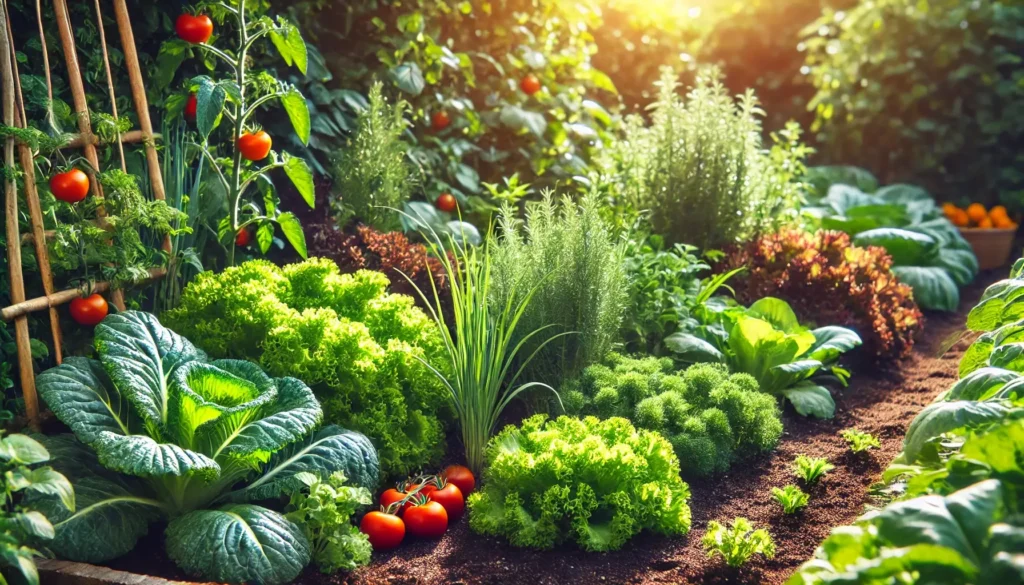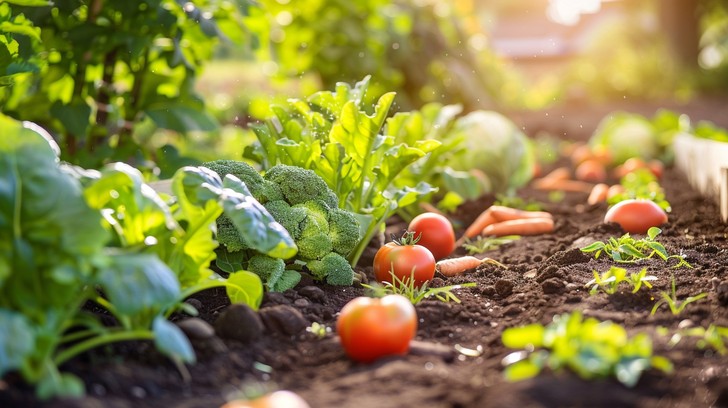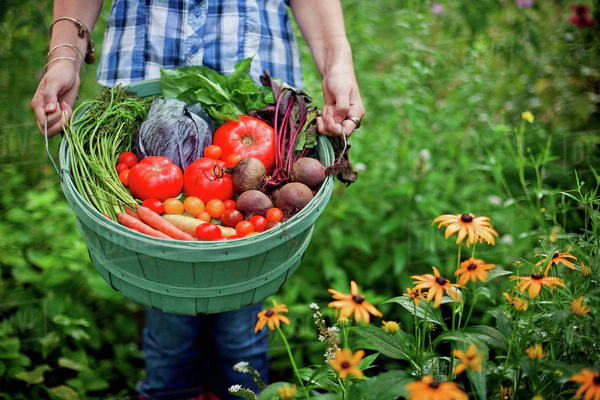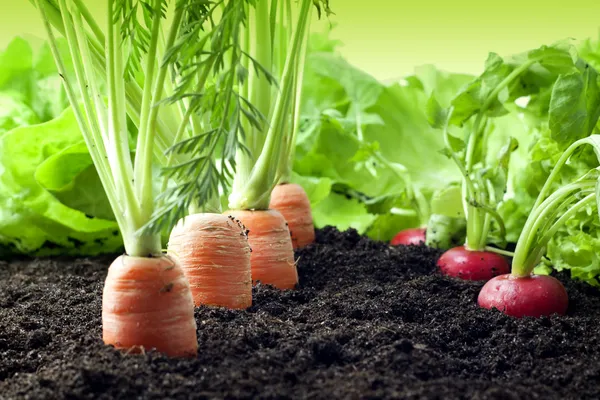Starting a vegetable garden is one of the most rewarding activities for beginners looking to grow fresh produce at home. Not only does it provide access to healthy, Vegetable Gardening for Beginners, organic vegetables, but it also promotes sustainability and reduces grocery costs. If you’re a beginner, this guide will walk you through everything you need to know to get started, from choosing the right vegetables to maintaining a thriving garden. Let’s dive into the essentials of vegetable gardening and transform your backyard into a productive, green haven.
Why Start Vegetable Gardening?

Table of Contents
1. Health and Financial Benefits
Growing your vegetables means you control what goes into your food. It’s an excellent way to enjoy pesticide-free, nutrient-rich produce while cutting down on grocery bills. Plus, eating fresh vegetables harvested straight from your garden ensures maximum flavor and nutrition.
2. Eco-Friendly and Sustainable Living
A vegetable garden contributes to reducing your carbon footprint. By growing your food locally, you minimize packaging waste and transportation emissions, fostering a more sustainable lifestyle.
3. Personal Satisfaction and Learning
The process of planting, nurturing, and harvesting is deeply satisfying. Beginners often find joy in watching their efforts bear fruit—literally! Plus, gardening is a fantastic way to learn about plants, soil, and the environment.
Essential Preparations
1. Selecting the Right Location
Choose a spot that receives at least six hours of sunlight daily. Ensure it has access to water and good drainage to prevent root rot.
2. Choosing Beginner-Friendly Vegetables
Opt for vegetables that are easy to grow, such as:
- Tomatoes
- Lettuce
- Radishes
- Carrots
- Zucchini These are forgiving plants that thrive with minimal care.
3. Gathering Tools and Materials
Equip yourself with basic gardening tools like a trowel, watering can, garden gloves, and a soil pH tester. Compost or organic fertilizers are also essential for enriching the soil.
Step-by-Step Guide to Starting Your Garden
1. Planning Your Layout
Sketch out your garden layout to ensure adequate spacing for each vegetable. Consider companion planting, where certain plants benefit from being grown together, like tomatoes and basil.
2. Preparing the Soil
Test the soil’s pH level and amend it if necessary. Most vegetables prefer a slightly acidic to neutral pH (6.0–7.0). Add compost to enhance fertility and structure.
3. Planting Seeds or Seedlings
Follow the planting instructions on seed packets for depth and spacing. For faster results, consider using seedlings instead of seeds.
4. Watering and Fertilizing Essentials
Keep the soil consistently moist but not waterlogged. Use organic fertilizers to provide essential nutrients during growth phases.
Maintenance Tips for a Thriving Garden

1. Managing Pests and Weeds
Regularly inspect your plants for signs of pests like aphids or caterpillars. Use natural deterrents like neem oil or companion plants. Mulching helps suppress weed growth and retains soil moisture.
2. Best Practices for Watering and Mulching
Water your garden early in the morning to reduce evaporation. Apply a layer of mulch around your plants to maintain consistent soil temperature and moisture.
3. Seasonal Care Tips
Adapt your gardening practices to the seasons. For instance, protect your plants from frost with covers or move potted plants indoors during winter.
Harvesting and Beyond
1. Signs Your Vegetables Are Ready to Harvest
Each vegetable has its unique signs of maturity:
- Tomatoes: Bright red and firm to the touch.
- Lettuce: Leaves are large enough to cut.
- Carrots: Tops should be about ½ inch in diameter.
2. Storing and Using Your Fresh Produce
Store your harvest in cool, dry places or use them fresh in meals. Freezing or pickling is an excellent option for surplus produce.
3. Expanding Your Garden in Future Seasons
Once you’ve mastered the basics, experiment with more challenging crops like broccoli or melons. You can also explore vertical gardening to maximize space.
Beginner-Friendly Gardening Tips
- Start small with a manageable plot or container garden.
- Keep a gardening journal to track your progress and learn from mistakes.
- Don’t hesitate to seek advice from local gardening communities or online forums.
- Celebrate small wins—every sprout is a success!
FAQs About Vegetable Gardening for Beginners
1. What is the best vegetable for beginners to grow?
Beginner-friendly vegetables include tomatoes, lettuce, radishes, carrots, and zucchini. These plants are low-maintenance, grow quickly, and thrive in various climates.
2. How much sunlight do vegetable gardens need?
Most vegetables require at least 6–8 hours of direct sunlight daily to grow well. Choose a sunny spot for optimal results.
3. Do I need a lot of space to start a vegetable garden?
Not at all! You can start a vegetable garden in a small backyard, balcony, or even containers. Raised beds and vertical gardening are excellent options for small spaces.
4. How do I prepare the soil for vegetable gardening?
Test your soil’s pH and nutrient levels. Add organic matter like compost or manure to improve fertility and structure. Ensure the soil is loose and well-draining.
5. How often should I water my vegetable plants?
Water your plants consistently, keeping the soil moist but not waterlogged. Early morning is the best time to water, as it reduces evaporation and gives plants time to absorb moisture.
6. What are the easiest vegetables to grow indoors?
Herbs like basil and parsley, as well as leafy greens like spinach and lettuce, are great for indoor gardening. They require minimal sunlight and thrive in containers.
7. How can I prevent pests in my vegetable garden?
Use natural pest deterrents such as neem oil, garlic spray, or companion planting (e.g., marigolds to repel aphids). Regularly inspect your plants and remove pests manually if needed.
8. Can I grow vegetables year-round?
Yes, you can grow vegetables year-round by selecting crops suited for each season. Use cold frames or indoor setups with grow lights for winter gardening.
9. What tools do I need to start vegetable gardening?
Basic tools include a trowel, gardening gloves, a watering can, pruning shears, and a soil pH tester. For beginners, these essentials are enough to get started.
10. How long does it take for vegetables to grow?
The growth time varies by vegetable. For example:
- Radishes: 3–4 weeks
- Lettuce: 6–8 weeks
- Tomatoes: 10–12 weeks Check seed packets for specific timelines.
11. Can I start a vegetable garden without seeds?
Yes, you can use seedlings or starter plants purchased from a nursery. This is a great option for beginners, as it skips the germination stage.
12. What are common mistakes beginners should avoid?
- Overwatering or underwatering plants.
- Planting too many varieties at once.
- Not spacing plants properly.
- Neglecting soil preparation and testing.
13. How can I make vegetable gardening easier for beginners?

- Start small with 2–3 vegetable types.
- Use raised beds or containers to simplify soil management.
- Choose easy-to-grow vegetables and focus on consistent care.
Conclusion
Vegetable gardening is an enriching activity that offers health benefits, sustainability, and personal satisfaction. With the right preparation, tools, and mindset, anyone can create a thriving garden. Use this guide as your roadmap and take the first step toward growing fresh, delicious produce at home. Happy gardening!








